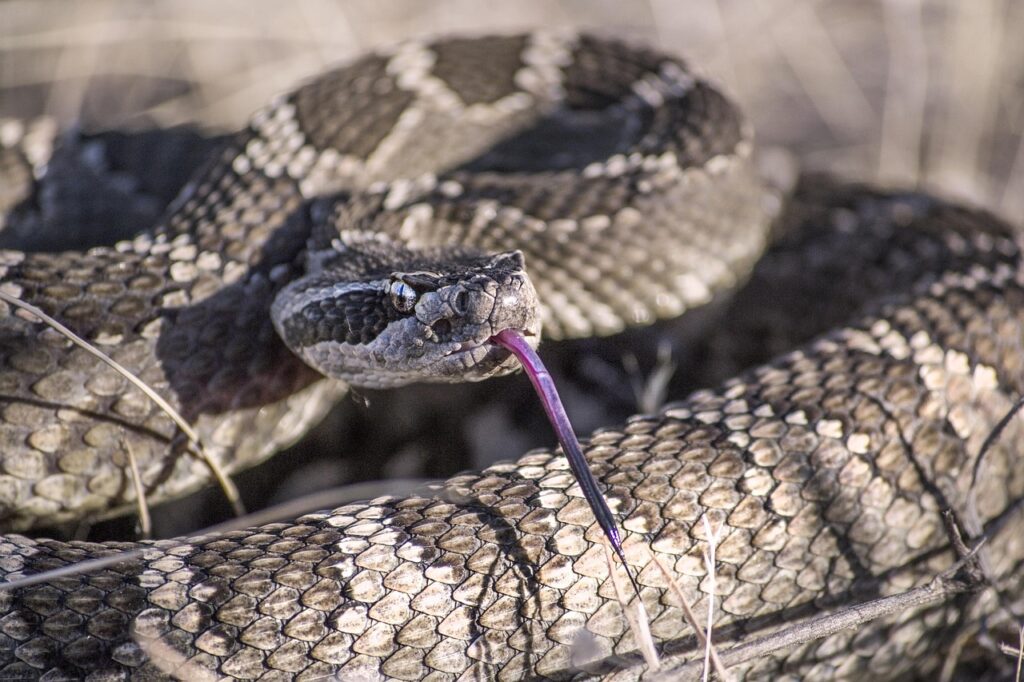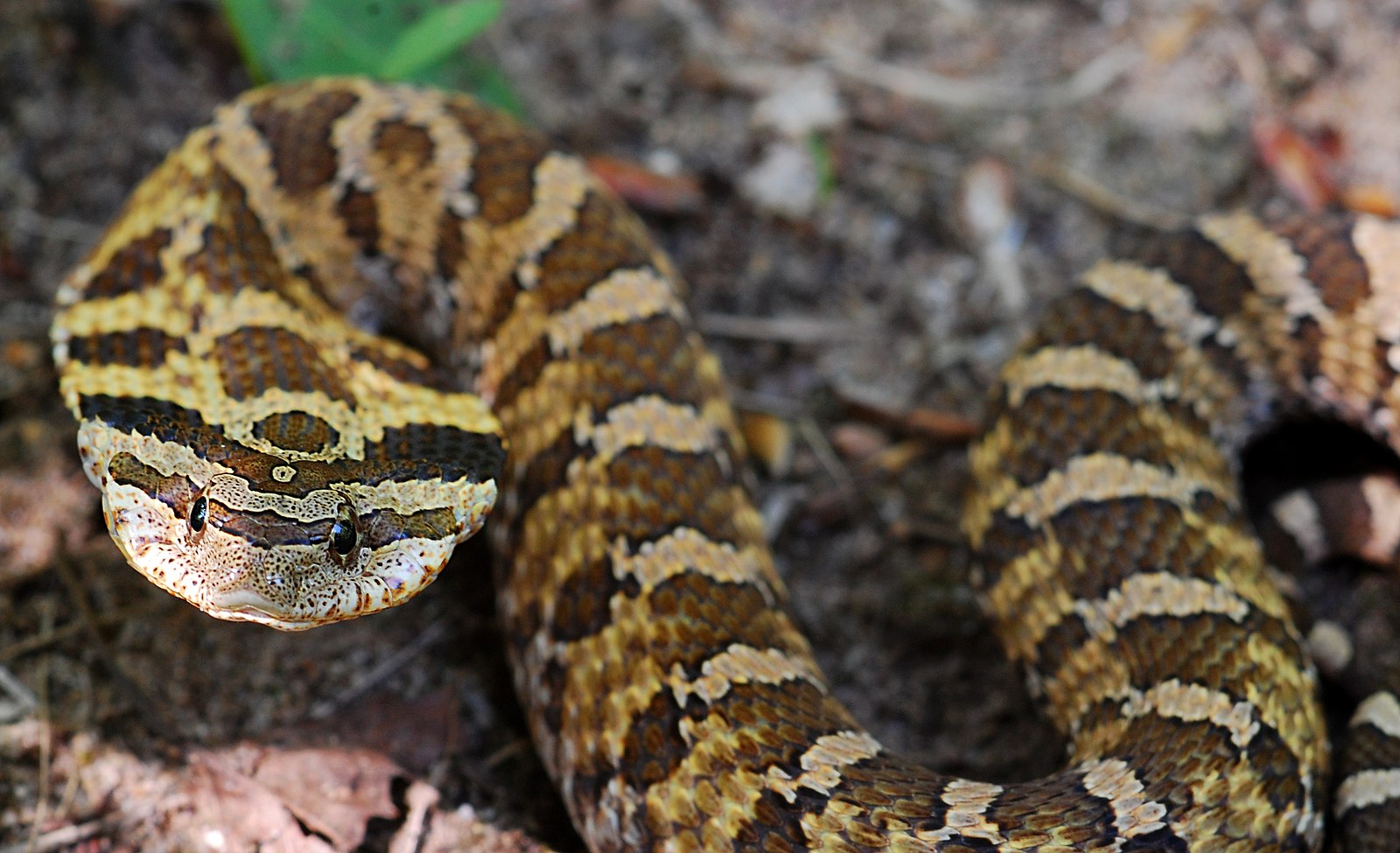The silent strike of a venomous snake is one of nature’s most sophisticated hunting mechanisms. For millions of years, snakes have evolved complex toxic cocktails that immobilize prey, begin digestion, and serve as powerful defensive tools. Snake venom represents one of the most remarkable biochemical adaptations in the animal kingdom—a potent mixture of proteins and enzymes specifically designed to disrupt physiological processes. Far from being a simple poison, these venoms vary dramatically across species, creating diverse effects ranging from blood coagulation disruption to neurotoxicity. This fascinating intersection of evolution, biochemistry, and medicine not only reveals how these reptiles have mastered survival but also provides valuable insights into human medicine and the development of life-saving treatments.
The Evolutionary Development of Snake Venom

Snake venom didn’t appear suddenly in evolutionary history but rather developed gradually over millions of years. Scientists believe venom systems evolved from modified salivary glands, with the proteins that would eventually become toxins starting as ordinary digestive enzymes. Through a process called gene duplication and neofunctionalization, these ordinary proteins evolved specialized toxic properties while retaining their original molecular structures. This evolutionary innovation occurred independently multiple times across different snake lineages, explaining why venoms vary so significantly between snake families. The selective pressure driving this evolution was primarily the efficiency of prey acquisition and digestion, with defensive capabilities emerging as a secondary benefit.
The Complex Composition of Venom

Snake venom is far more complex than a simple poison, containing a sophisticated mixture of up to 100 different biologically active components. These components primarily consist of proteins and peptides, including enzymes, non-enzymatic polypeptides, and low-molecular-weight organic compounds that work synergistically. Phospholipases, metalloproteases, serine proteases, and neurotoxins represent just some of the major classes of toxins found in these venoms. The exact composition varies dramatically between species, with factors like geography, diet, age, and even season influencing the specific venom profile of an individual snake. This complexity makes snake venoms among the most sophisticated biochemical weapons in nature, with each component playing a specific role in immobilizing, killing, or digesting prey.
Hemotoxic Venoms: Attacking the Blood

Hemotoxic venoms, common in vipers and pit vipers, primarily target the cardiovascular system with devastating efficiency. These venoms contain enzymes that disrupt the blood’s clotting ability, either by causing coagulation (creating dangerous clots) or preventing clotting entirely, leading to uncontrollable bleeding. Metalloproteases in these venoms damage blood vessel walls, increasing permeability and causing severe internal hemorrhaging. The tissue destruction caused by hemotoxic venoms often results in severe swelling, blistering, and necrosis that can lead to permanent tissue damage or even limb amputation if untreated. Additionally, these venoms often contain myotoxins that break down muscle tissue, potentially leading to rhabdomyolysis and subsequent kidney failure as the body struggles to filter the breakdown products.
Neurotoxic Venoms: Targeting the Nervous System

Neurotoxic venoms, predominantly found in elapids like cobras, mambas, and sea snakes, specifically attack the nervous system with precision and speed. These venoms contain peptides and proteins that interfere with neurotransmission, typically by either blocking or continuously activating key receptors at neuromuscular junctions. Alpha-neurotoxins, for example, bind to acetylcholine receptors, preventing muscle stimulation and ultimately causing paralysis that can progress from the extremities toward the diaphragm and other respiratory muscles. The resulting respiratory paralysis is often what makes these venoms lethal, as victims can suffocate while remaining fully conscious. Krait and coral snake venoms exemplify particularly potent neurotoxic effects, capable of causing death within hours if antivenom treatment isn’t administered promptly.
Cytotoxic Venoms: Destroying Cells and Tissues

Cytotoxic venoms contain components specifically designed to rupture and destroy cells, causing extensive tissue damage at the bite site and beyond. Spitting cobras and some vipers produce venoms rich in cytotoxins that directly damage cell membranes, leading to cellular death followed by painful swelling, blistering, and tissue necrosis. These venoms often contain enzymes like hyaluronidase, sometimes called the “spreading factor,” which breaks down connective tissue barriers and allows toxins to penetrate deeper into the victim’s tissues. The resulting tissue destruction can be permanent and disfiguring, sometimes requiring surgical debridement or even amputation in severe cases. Beyond the immediate tissue damage, cytotoxic venoms can lead to systemic effects including organ failure if significant amounts enter the bloodstream.
Venom Delivery Systems: The Perfect Injection

The effectiveness of snake venom depends not only on its biochemical composition but also on sophisticated delivery systems that have evolved to maximize envenomation efficiency. Advanced venomous snakes possess specialized hollow or grooved fangs connected to venom glands via ducts, allowing for precise injection of toxins into prey or predators. In vipers and rattlesnakes, these fangs can fold back against the roof of the mouth when not in use and rotate forward when striking, functioning essentially as hypodermic needles. Elapids like cobras have fixed, shorter fangs that require a chewing motion to deliver multiple doses of venom. Certain specialized species, like spitting cobras, have evolved modified venom canal openings that allow them to project venom several feet toward a threat’s eyes, causing painful blindness without requiring physical contact.
How Venom Facilitates Feeding

The primary evolutionary function of snake venom is not defense but rather prey acquisition and digestion. Venom significantly increases hunting efficiency by immobilizing prey quickly, reducing the risk of injury from struggling prey and minimizing energy expenditure during pursuit. Many snake venoms contain digestive enzymes that begin breaking down tissues before consumption, essentially initiating external digestion. This pre-digestion is particularly important for snakes, which swallow prey whole and cannot mechanically break down food through chewing. For some species like the king cobra, specialized prey-specific toxins have evolved that are particularly effective against other reptiles, demonstrating how venom composition can adapt to dietary specialization. The use of venom also allows snakes to tackle prey significantly larger than themselves, expanding their potential food sources.
Human Envenomation: Symptoms and Progression

When humans are envenomated by snakes, the clinical progression follows predictable patterns based on the venom type, though individual reactions vary widely. Initial symptoms typically include pain, swelling, and puncture marks at the bite site, followed by more specific manifestations depending on the venom’s composition. Hemotoxic bites often progress to extensive bruising, blistering, and uncontrolled bleeding from the wound site and potentially from gums, nose, or in urine. Neurotoxic envenomation typically begins with pins-and-needles sensations, followed by drooping eyelids (ptosis), slurred speech, difficulty swallowing, and eventually respiratory distress as paralysis progresses. Systemic effects can include hypotension, shock, kidney failure, and coagulopathy that can persist for days or weeks after the initial bite. The severity of symptoms depends on factors including the snake species, amount of venom injected, bite location, and victim characteristics like age, size, and pre-existing health conditions.
Dry Bites and Venom Conservation

Contrary to popular belief, not every bite from a venomous snake results in envenomation, as snakes often deliver what experts call “dry bites” with little or no venom injected. Venom production requires significant metabolic energy, leading snakes to be surprisingly conservative with this precious resource, particularly when biting defensively rather than for feeding. Studies suggest that approximately 20-25% of venomous snake bites to humans are dry bites, though this percentage varies significantly between species. Pit vipers and elapids can control their venom glands using specialized muscles that either restrict or increase venom flow based on the perceived threat level or prey size. This venom conservation strategy makes evolutionary sense, as wasting venom on a non-prey animal like a human provides no feeding advantage and leaves the snake temporarily disadvantaged for actual hunting.
Antivenom Development and Production

Antivenom remains the primary life-saving treatment for snakebite envenomation, developed through a process that has remained largely unchanged for over a century. Production typically begins by collecting venom from snakes through a process called “milking,” where the snake bites through a membrane covering a collection vessel. This venom is then diluted and injected into production animals—typically horses or sheep—in gradually increasing doses to stimulate antibody production against the venom components. After several months, blood is collected from these hyperimmunized animals, and the antibody-containing plasma is extracted, purified, and processed into either whole IgG or fragmented F(ab’)2 products. Modern antivenom production faces significant challenges, including high costs, limited shelf life, and the need for cold-chain distribution in often remote tropical regions where snakebites are most common.
The Global Snakebite Crisis

Snakebite envenomation represents one of the world’s most neglected tropical diseases, causing approximately 81,000-138,000 deaths annually and leaving hundreds of thousands more with permanent disabilities. The burden falls disproportionately on rural communities in low and middle-income countries across Africa, Asia, and Latin America, where agricultural workers often encounter venomous snakes while working barefoot in fields. Despite this significant health impact, snakebite has historically received minimal international attention and funding compared to diseases with similar mortality rates. The World Health Organization has recognized this disparity, declaring snakebite envenomation a priority neglected tropical disease in 2017 and launching a comprehensive strategy to reduce snakebite mortality and disability by 50% before 2030. Major challenges to addressing this crisis include the high cost of antivenom production, lack of healthcare infrastructure in affected regions, and the absence of reliable epidemiological data on snakebite incidence.
Venom in Medical Research and Drug Development

The complex biochemistry of snake venoms has proven to be a rich source of compounds with valuable applications in medicine and pharmaceutical research. Captopril, one of the first ACE inhibitors used to treat hypertension and heart failure, was developed based on peptides isolated from the venom of the Brazilian pit viper Bothrops jararaca. Snake venom disintegrins, which prevent platelet aggregation, have led to the development of antiplatelet drugs that prevent blood clotting in heart attack and stroke patients. Neurotoxic components from cobra and sea snake venoms have applications in pain management research, with some compounds showing potential as non-addictive analgesics thousands of times more potent than morphine. Additionally, certain snake venom proteins are being investigated for anti-cancer properties, with some showing promise in disrupting the growth and spread of tumor cells through various mechanisms.
Venom Variation and Adaptation

Snake venom composition demonstrates remarkable plasticity, varying not only between species but also within populations and even during an individual snake’s lifetime. Geographic variation in venom composition presents one of the greatest challenges in antivenom production, as a single species may produce significantly different toxin profiles across its range. Research has revealed that diet plays a crucial role in venom evolution, with toxins often showing heightened effectiveness against a snake’s primary prey species. Ontogenetic shifts in venom composition also occur as snakes mature, with juveniles of some species producing more neurotoxic venoms while adults transition toward more hemotoxic profiles. Environmental factors including temperature, altitude, and seasonal changes can further influence venom production, creating a dynamic and constantly evolving biochemical arsenal that continues to challenge scientists’ understanding.
The science of snake venom represents one of nature’s most fascinating examples of biochemical evolution. These complex toxin cocktails, refined over millions of years, demonstrate the incredible adaptability of life and the intricate relationships between predators and prey. From the devastating effects on victims to the life-saving medications derived from their components, snake venoms continue to both threaten and benefit humanity. As research advances, our understanding of these remarkable substances deepens, potentially unlocking new treatments for various medical conditions while improving outcomes for the hundreds of thousands affected by snakebites annually. Through this greater knowledge, we may transform one of nature’s most feared weapons into one of medicine’s most valuable resources, turning the evolutionary arms race between snakes and their prey into a powerful tool for human health.




